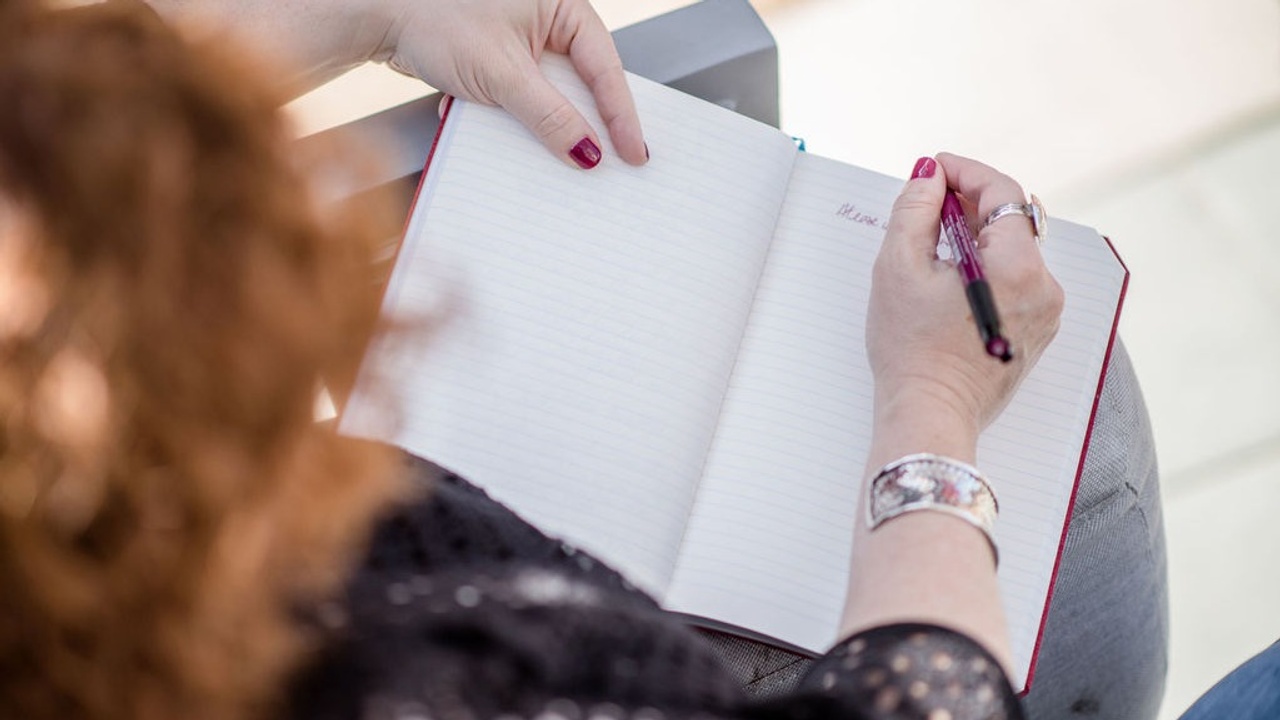6 Great Reasons to Use a Writer’s Notebook (and How)

Keeping a writer’s notebook is an essential tool for creating and maintaining a writing life you love.
To be clear, I’m not talking here about a journal, which is a book into which you write your thoughts and feelings about anything that strikes you. I’m also not talking about a diary, which can be similar to a journal but is typically a calendarized book where you enter reflections on a daily basis.
I’ve used both, and enjoyed both, but a writer’s notebook is different and I think it’s an essential tool for any writer. If I could only have one type of notebook (nooooo!) I would have to choose the writer’s notebook.
Here are 6 reasons why:
A Writer’s Notebook has Low Stakes
Perfectionism is my enemy as a writer. It trips up nearly every writer I know at one point or another. In my Writer’s Flow Studio program, we’ve talked a lot about this and our March Masterclass was on how to overcome it. One of the tools I use to manage my perfectionism is my writer’s notebook.
When you use a writer’s notebook, you want to release the idea of making it perfect, or even making it pretty. The best writer’s notebooks are a complete mess -- bits of paper sticking out, wine or coffee stains on the cover, a bit roughed up from all the times it was used as a writing surface...let it be a catch-all and a space for creative chaos.
Use your writer’s notebook as a place to practice being free of the urge to have every word you write be the most perfect word.
A Writer’s Notebook Can Go Anywhere
You don’t have to search for a free spot to plug it in at the coffee shop, and it’s as useful under a tree in the park as it is at home next to the bed. You can take your notebook absolutely everywhere, save perhaps the swimming pool!
A Writer’s Notebook is Time Tested
Hemingway used one, but hey -- Hemingway also had a drinking problem so let’s pick and choose our heroes carefully.
Joan Didion is the writer I turn to when thinking about the writer’s notebook. She used the phrase “See enough and write it down” in her iconic essay “On Keeping a Notebook” (in her 1968 book of essays Slouching Towards Bethlehem) and that’s the best writer’s motto I can think of.
See enough and write it down. -- Joan Didion
I recommend reading the full essay, but for now here’s a quick overview of Joan Didion’s perspective on using a notebook, from the BrainPickings blog and newsletter curated by Maria Popova. (A blog worth subscribing to, by the way!)
A Writer’s Notebook is the Writer’s Playground
You don’t have to finish anything you put in your notebook, and this can free you up to just play. Take a tip from Didion: simply observe what’s happening around you and write it down.
Grab snippets of overheard conversations, notes on the range of human gestures, sense-based descriptions of different places, descriptions of possible characters you’re stealing from what the non-writer world refers to as “people.” It’s all play and practice and who knows what will come of it? Maybe nothing, except a chance to work your writing muscles and practice the art of seeing.
The other great way to use a writer’s notebook is to play around with writing prompts. Set a timer and grab a prompt. (Here’s a collection of places to find the best ones.)
With no intent except to be a writer writing now, in this moment, you can spend 10-15-20 minutes practicing your art. Purely for the pleasure of it. This is one of my favourite ways to use my notebook.
A Writer’s Notebook is a Catch-All
In addition to your own notes, thoughts, descriptions, draft scenes, character sketches, etc, you can use your writer’s notebook to catch all those new ideas that come to you as you’re thinking about writing, or just when you’re washing the dishes.
Your notebook can be the place where you quickly scribble down “a man drives his car onto a woman’s lawn -- short story” and then when you’re ready to choose your next writing project, you can come back to your notebook as a repository of ideas to choose from.
You can also clip out magazine articles or stick postcards that inspire you into the back of your notebook. (One reason I love a Moleskine is for those little envelopes attached to the back cover.) My own notebook is also stuffed full of different Post-It notes and random pieces of paper.
A Writer’s Notebook Keeps You Writing Consistently
We don’t always feel like we’re up to the task of writing the next great work of fiction or poetry. Maybe we’re still working up the courage to start on the memoir we know we’ll eventually need to write, or maybe we’ve just finished a major project and need a breather. Or maybe we have to face some of our fears about writing before we can commit to a larger piece of work.
But writing in your notebook is always possible. If the well-worn saying “writer’s write” is true (and I think it just might be, most of the time) the writer’s notebook is a way to keep ourselves writing consistently outside of the grand vision of writing as LITERARY ART and all the pressure that can entail. You’ve got your notebook and here you are: a writer, writing.
Take Action!
Why not get a new notebook today and designate it as your writer’s notebook. Schedule a few Short Time writing sessions over the course of the next week and write what you see.
To help with that, here’s a post on the best notebooks for writers, and some fun writing prompts to get you started.

